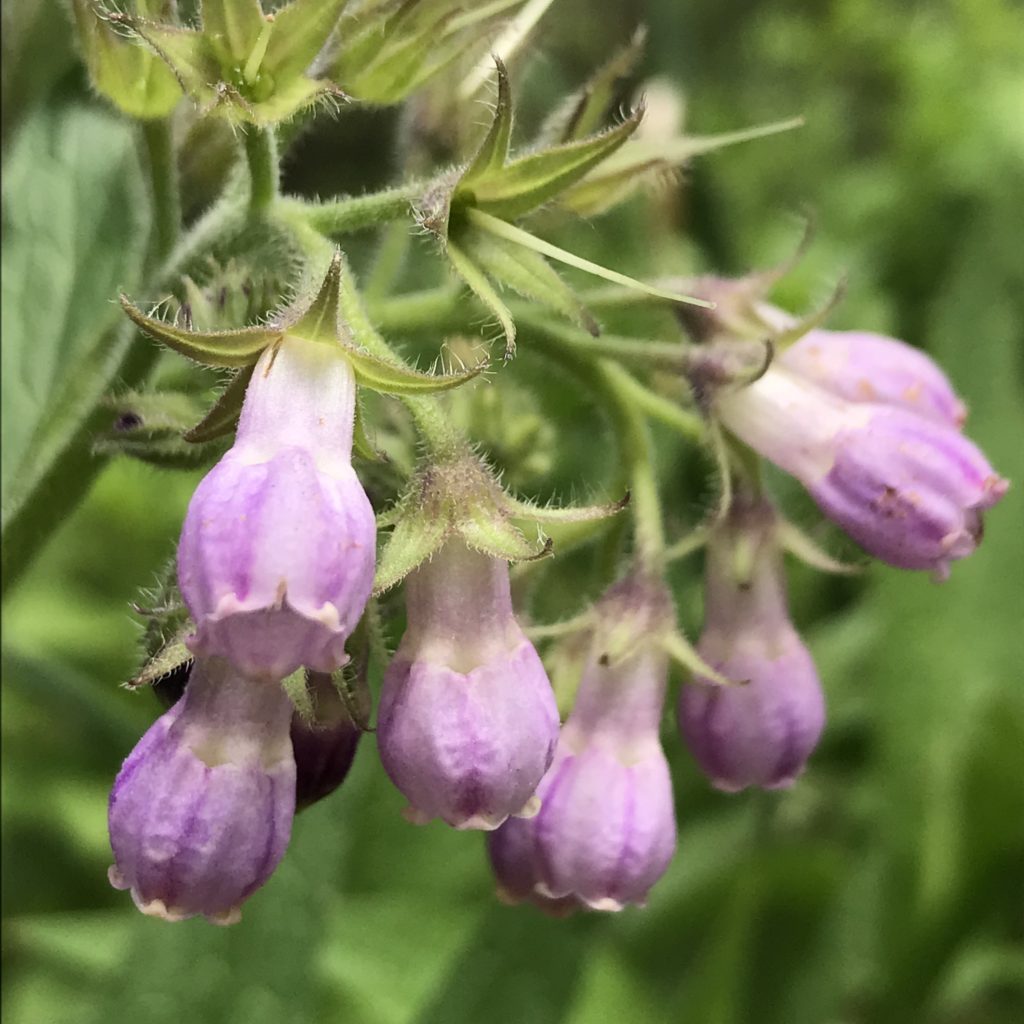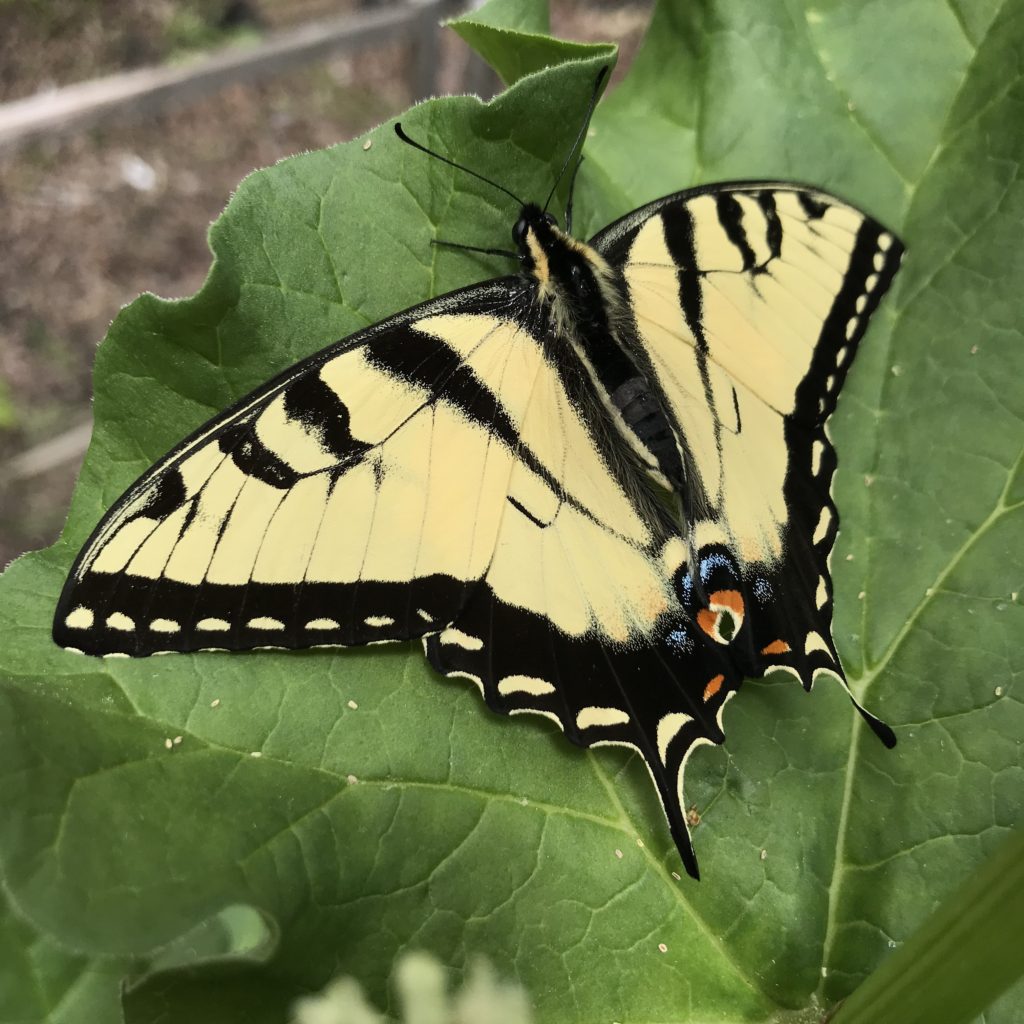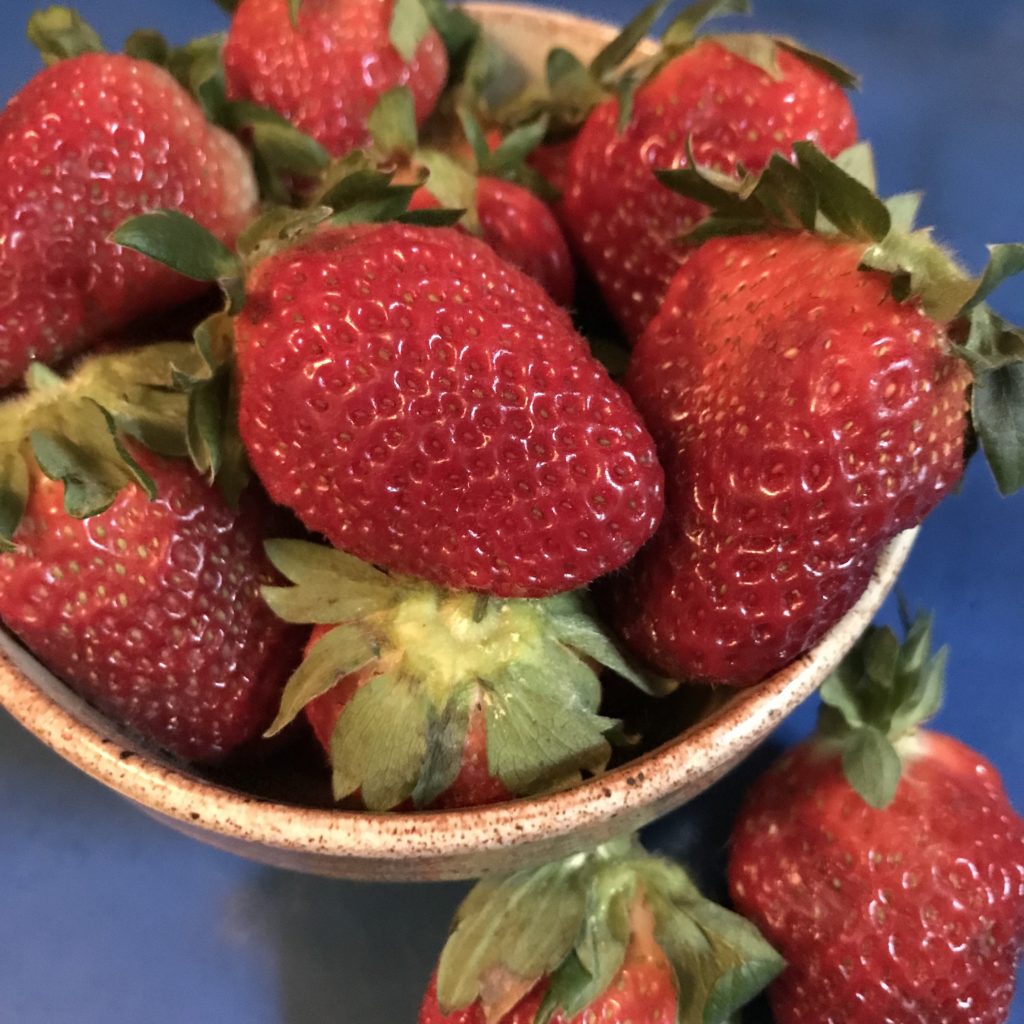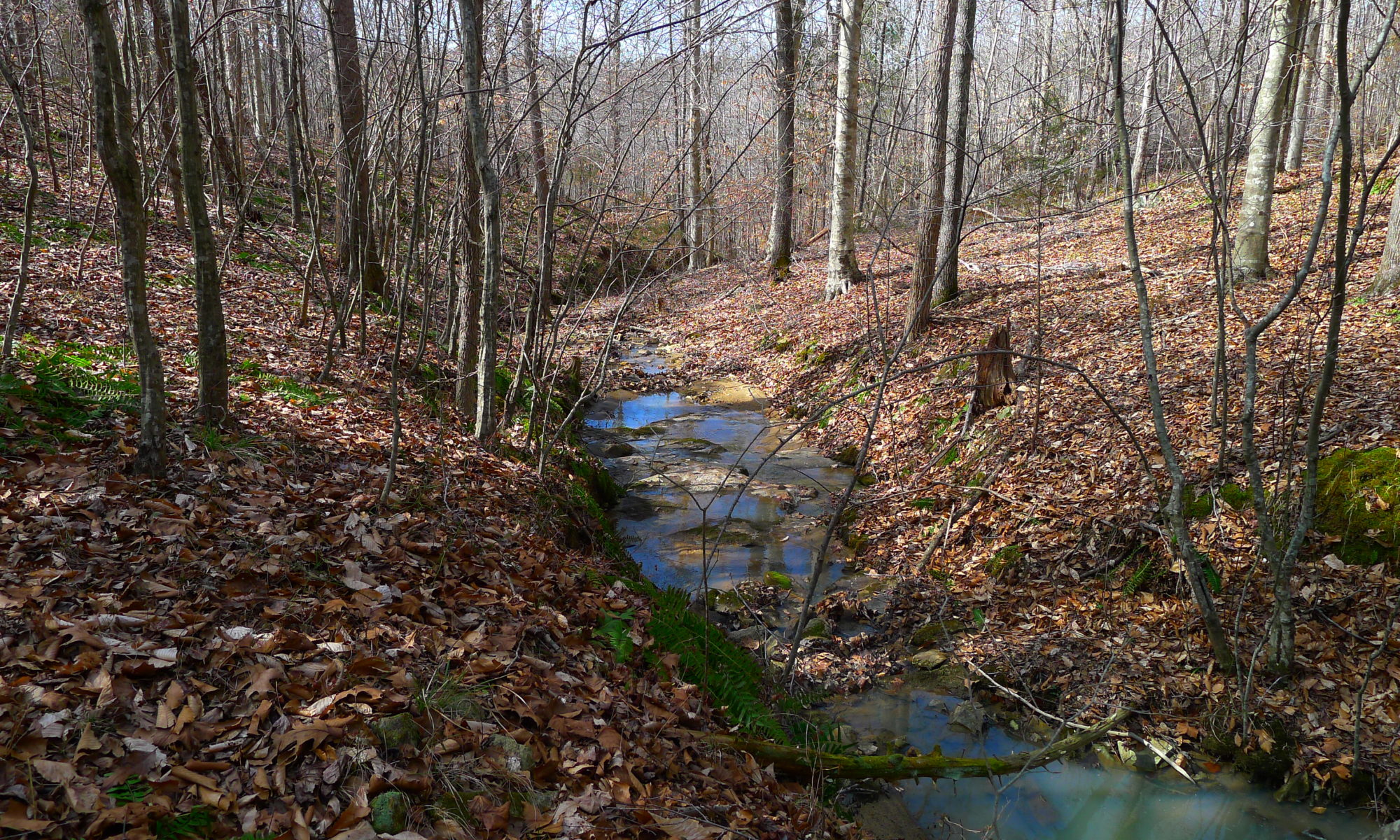
The first vegetables went in today: the tomatoes, zucchini, and basil, all grown from seed. The tomatoes are a bit spindly, but I’ve put them in to a well-composted bed (thanks, CompostNow!), so fingers crossed. I’ve also put in two Monarda plants to replace the ones that didn’t come back last summer. I’m still trying to decide where to plant the other starts. All my initial ideas were overturned as I looked at the garden today. I think I’ll put the artichokes in with the rhubarb (and not the baby brassicas). Yes, I’m trying artichokes again. Third time lucky, I hope. I’d also like to plant a three sisters bed, and revamp the rocket (arugula) patch into a mini herb garden. Some rocket has come back already, but that space is a weedy mess right now. Only the sage is holding its own.
In other garden news, the blueberry bushes are in flower, as is the comfrey (see above). Both were attracting butterflies and bees.

Apart from sage and also mint, nothing is ready to eat. The rhubarb has already bolted (!) but after a quick internet search (thanks, The Daring Gourmet), I find I don’t need to panic about that. I’ll cut the flowers off and perhaps still get to enjoy some home-grown rhubarb.
If my rhubarb is (sort of) in season, then I must be able to buy it locally, but I’ve not seen any in the shops yet. The one item I was excited to see in Wholefoods Durham were local strawberries. I confess, I have a bad track record of buying strawberries on impulse, thinking I’ll do something special with them, but then leaving them in the fridge for weeks until they’re good for nothing except compost. Not this time! These will get eaten, not the least because… Enter my new juicer (one of these)!! I have frozen one of the punnets to make sorbet, and fruit from the other will be added to juices. Strawberry and apple juice for sure…

